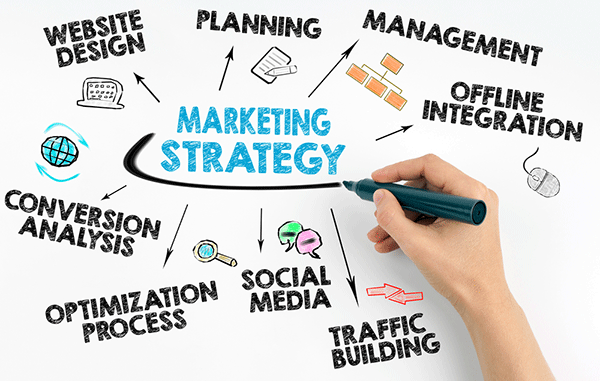
With billions of people spending 70% of their lives on digital channels, it becomes mandatory to device a digital marketing strategy. To accomplish your company’s marketing goals, it is imperative to arm your strategy with the right digital tactics and tools.
Wondering how to do all this? What tactics will be needed and how to craft a systematic plan?
Read below for crafting a digital marketing strategy from scratch:
1. Learning From Competitors and Setting Goals
First things first, develop SMART goals. You can look at your former practices, industry practices, and even your competitors to establish goals and strategies.
After a deeper analysis of your competitors, you will be able to set your realistic goals. However, make sure to align your prime business goals with your digital goals.
Example:
If your firm’s goal is to increase the revenue by at least 10%, you should aim at increasing the leads by 40% to meet the criteria.
2. Creating Buyer Personas and Selecting KPIs
Buyer personas are essentially the profile of your ideal customer(s). You need to put your best efforts into researching your ideal customers. Follow proven marketing research methods of surveying, interviewing, and focus groups to sieve the best prospects.
As per the nature of your business, you will consider the following points for integrating the buyer personas in your digital strategy:
Demographic and Quantifiable Figures
What’s the ideal income of your customer? Define how much money your customers earn in a year.
Where are your customers geographically? Use Google analytics tool to find where most of your customers live for targeted marketing research
How old is your ideal client?
Psychographic and Qualitative Data
Make efforts to know the problems they experience concerning your brand
Talk to the clients and know their priorities. What do they want first, attractive price over quality or customer service over quantity?
Go for questions that reveal the interests of your potential clients. For instance, if you are a fashion clothing brand and you got to know that targeted customers are more interested in fitness clothes, you will receive inspiration for your future partnerships.
3. KPIs
Set realistic goals with your Key Performance Indicators (KPIs). Keep the former strategy in mind and select the best tool for measuring your results. Google Analytics and Buzz Sumo are the two widely used tools for measuring KPIs.
4. Evaluating the Digital Assets
Check out where you stand today and assess your current digital channels. Categorize and organize your findings in a spreadsheet. You will categorize your assets in the following ways:
Owned Media
Your owned digital assets include your company’s website, blog, imagery, and profiles on social media channels. You will have full authority over these owned media assets.
Earned Media
Earned media is something that shows the transparency of your business. It includes the recognition that you gain through word of mouth. For instance, you got a commendable review from a customer, you wrote a PR, or you did some work on different websites (Guest Post). All this comes under the umbrella of earned media.
Paid Media
You are living in a competitive landscape, so you must have spent some good bucks for gaining visibility. Jot down your paid media ads on social media, Google AdWords, native ads, and all other channels where you pay for visibility.
Example:
You wrote and published content on your website for lead generation. This is your owned media. Now, you made efforts to promote your content on social media; people found your content useful and shared it on their own pages without being paid to do so, that is earned media. Finally, to increase its reach further, you bought a Facebook ad that is paid media.
5. Focus on Owned Media Content
Owned media is the heart of your content strategy. We all know that content enables us to generate leads. So, you need to hone your owned media content as per the digital strategy.
Here is how you can do it:
Check out the existing content on the website, analyze which content has been popular with your target audience.
Recall your buyer personas to see if your content meets up or not. For instance, if your buyers are more interested in knowing the kitchen hacks and you are just posting about everyday recipes, you are in the wrong pool.
As per your findings, make a plan for new content. Be sure to focus on the following points:
Example:
A cleaning business in England, , gained positive impressions and increased user engagement when they posted about cleaning and disinfecting tips for homeowners during COVID – 19.
6. Deciding Budget and Time
Ask yourself a few questions:
Now, decide how much money you can dedicate to your digital marketing strategy. Also, consider the time and efforts. Looks difficult? Use Google Calendar to keep your work organized.
Tip: Spreadsheet, along with Google Calendar, can make things easier for you. Make a coherent strategy, and be sure to document everything.
A digital marketing strategy is absolutely essential for a business in 2020. Do you have one? If not, use the points above to develop a winning digital marketing strategy to bowl over the competition.
Do you have any questions? Let us know; we are happy to help!
Featured image source:
https://www.shutterstock.com/image-photo/hand-marker-writing-marketing-strategy-business-522186031

Leave a Reply